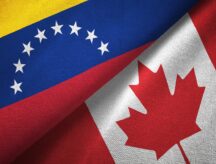How to immigrate to Canada from the Philippines
The Philippines is one of the top five leading countries of new immigrants to Canada.
Discover if You Are Eligible for Canadian Immigration
Currently, there are over 900,000 people of Filipino origin living in the country. Canada has become a popular destination for Filipinos due to the many economic opportunities it offers, the internationally recognized education system and the highly developed healthcare system.
Canada aims to welcome 465,000 new permanent residents by the end of 2023. This target is set at 500,000 by 2025.
Filipinos are in a good position to be selected as economic class immigrants due to their high levels of English proficiency, education, and professional work experience. Economic class immigration is the most popular way to immigrate to Canada, and has over 100 pathways.
The Federal Skilled Worker Program
The Federal Skilled Worker Program (FSWP) is a pathway under economic immigration that allows a candidate with foreign work experience to apply for permanent residency, even if they do not have a connection to Canada or a job offer in Canada.
The FSWP targets foreign skilled workers who are most likely to be successful in Canada because of their prior work experience, education and language ability. To be eligible for the program, candidates must have:
- One year of continuous full-time or equivalent paid work experience in the past 10 years in a skilled occupation classified under the National Occupational Classification (NOC) TEER category 0, 1, 2, or 3;
- Validated language ability equivalent to Canadian Language Benchmark (CLB) 7 in English or French across all abilities (reading, writing, listening, and speaking); and
- A Canadian educational credential (certificate, diploma, or degree) or foreign credential and Educational Credential Assessment (ECA) report.
- At least 67 points on IRCC’s six immigration selection factors.
- Enough money for you and your family to settle in Canada.
The FSWP is one of three programs managed by Express Entry. Express Entry is the federal government’s application system that manages the FSWP, the Canadian Experience Class (CEC) and the Federal Skilled Trades Program (FSTP).
When submitting an application in the Express Entry system, candidates will be ranked based on the Comprehensive Ranking System (CRS). The CRS considers individual factors, like age, education, language skills and work experience, and will assign you a score out of 600. Immigration, Refugees and Citizenship Canada (IRCC) will then invite those candidates with the highest scores to apply for permanent residence.
IRCC has also recently launched new category-based draws for Express Entry candidates. Candidates will be chosen under the category-based draw if they have a strong French language proficiency or have work experience in the following professions:
- Healthcare
- STEM professions
- Trades, such as carpenters, plumbers and contractors
- Transport
- Agriculture and agri-food
IRCC has recently held healthcare and STEM draws, as well as a draw inviting those with a strong French language proficiency to apply for permanent residence.
Provincial Nominee Program
The Provincial Nominee Program (PNP) is a popular option for candidates looking to immigrate to Canada from the Philippines. The PNP allows each province and territory (except for Nunavut and Quebec) to create and implement their own immigration pathways based on their labour and job market vacancies and demographic needs.
The provinces and territories can nominate foreign skilled workers to immigrate to their provinces through the PNP. Each province has their own eligibility criteria that a candidate must meet to be nominated by that province.
Candidates can apply directly to the province. However, candidates who are also in the Express Entry pool can be invited to apply for nomination. If a candidate is nominated through Express Entry, they receive an additional 600 CRS points, which essentially secures an invitation to apply for permanent residence in a future draw.
Caregiver Pilot Program
There are pilot work permit programs dedicated to caregivers. The Home Child Care Provider Pilot and the Home Support Worker Pilot offer permanent residence to caregivers who have eligible work experience for at least 12 months, language ability and eligible Canadian or foreign education.
The Home Care Provider Pilot requires that you care for a child below the age of 18 in your home or your employers, while the Home Support Worker Pilot requires you take care of someone who needs help from a home support worker, either in your home or your employer’s home.
IRCC sets out the following information about work experience criteria for the pilots:
- Effective April 30, 2023, you need to have at least 12 months of full-time work experience within the 36 months of applying to a pilot
- The work experience must fall under National Occupational Classification (NOC) codes 4411 or 4412
- Your work experience must be in one of these jobs, it cannot be a mix of both jobs
- You need to demonstrate your job matched the NOC job description and you completed most of the main duties
- Your work experience does not need to be 12 months in a row. It just needs to be 12 months total
- Full-time work is defined as at least 30 hours of paid work each week
Regional pilot programs
There are other pilots such as the Rural and Northern Immigration Pilot, which works with small and remote communities in Ontario, Western Canada and the three territories to attract and retain foreign workers.
To be eligible for the RNIP, a candidate must meet the federal criteria as well as the requirements established by the participating community where they plan to settle. The federal criteria are:
- Have a recommendation from one of the designated communities
- Have one year of continuous work experience in the past three years (a minimum of 1,560 hours)
OR
- Have graduated from a publicly funded post-secondary institution in the recommending community
- Have a genuine job offer to work in one of the designated communities
- Meet the language threshold for the NOC skill type/level of the job being offered
- Have sufficient funds to settle and support themselves and their family in the community
- Have an intention to live in the community
The Atlantic Immigration Program offers permanent residence to skilled workers that want to settle in New Brunswick, Nova Scotia, Newfoundland and Labrador or Prince Edward Island.
To be eligible for the AIP you must:
- Have qualifying work experience unless you are an international student that graduated from a recognized post-secondary institution in Atlantic Canada.
- Meet the educational and language criteria
- Show you have enough settlement funds. You do not need to show proof of settlement funds if you are already living and working in Canada with a valid work permit.
- If you meet all the above criteria, you can start looking for a job with a designated Atlantic Canada employer.
Study permits
Canada is a popular destination for international students because of its high quality and affordability of education, the opportunity to work while studying and the opportunity to get permanent residency upon graduation.
Canada welcomed 551,405 international students from 184 countries in 2022, a record high. Of that number, 23,380 were Filipino students.
To study in Canada, you must first be accepted to Canadian designated learning institution. You can then apply for your study permit. After graduating, international students may be eligible to remain in Canada for up to three years on a Post-Graduation Work Permit (PGWP).
Finally, Canadian education can be advantageous to candidates seeking permanent residency, as many immigration programs value candidates with Canadian education and work experience.
The Student Direct Stream (SDS) is a program that makes the process of applying for a study permit faster and more efficient. The SDS currently serves residents of 14 countries, including the Philippines. Canada aims to process all study permit applications through the SDS in 20 calendar days.
Work permits
To work in Canada, foreign workers generally need a work permit. Canadian work permits are divided into two programs: the Temporary Foreign Worker Program (TFWP) and the International Mobility Program (IMP). The difference between the two programs is that the TWFP requires a Labour Market Impact Assessment (LMIA), while the IMP does not.
An LMIA proves to the Canadian government that hiring a foreign worker will either have a positive or neutral effect on the Canadian job market. It is the employer’s responsibility.
- Do you need Canadian immigration assistance? Contact the Contact Cohen Immigration Law firm by completing our form
- Send us your feedback or your non-legal assistance questions by emailing us at media@canadavisa.com







